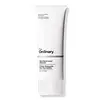What's inside
What's inside
 Key Ingredients
Key Ingredients

 Benefits
Benefits

 Concerns
Concerns

 Ingredients Side-by-side
Ingredients Side-by-side

Water
Skin ConditioningBehenyl Alcohol
EmollientPolyglyceryl-2 Stearate
EmulsifyingGlycolipids
Skin ConditioningPentylene Glycol
Skin ConditioningPolyglyceryl-6 Dicaprate
EmulsifyingGlyceryl Stearate
EmollientStearyl Alcohol
EmollientDiutan Gum
Polyacrylate Crosspolymer-6
Emulsion StabilisingSodium Phytate
Phytic Acid
Trisodium Ethylenediamine Disuccinate
Sodium Benzoate
MaskingPhenoxyethanol
PreservativeChlorphenesin
AntimicrobialWater
Skin ConditioningCaprylic/Capric Triglyceride
MaskingGlycerin
HumectantIsononyl Isononanoate
EmollientCetearyl Alcohol
EmollientPropanediol
SolventAnnona Cherimola Fruit Extract
Skin ConditioningButyrospermum Parkii Butter
Skin ConditioningGlyceryl Stearate
EmollientTribehenin
EmollientPEG-100 Stearate
Niacinamide
SmoothingPhenoxyethanol
PreservativePolyacrylate Crosspolymer-6
Emulsion StabilisingSaccharide Isomerate
HumectantPolysorbate 20
EmulsifyingTrifolium Pratense Flower Extract
AstringentCaprylyl Glycol
EmollientPanthenol
Skin ConditioningButylene Glycol
HumectantSodium Benzoate
MaskingEthylhexylglycerin
Skin ConditioningCitric Acid
BufferingSodium Lauroyl Lactylate
EmulsifyingBisabolol
MaskingSodium Hyaluronate
HumectantTetrasodium EDTA
Panax Ginseng Root Extract
EmollientSodium Citrate
BufferingLecithin
EmollientT-Butyl Alcohol
PerfumingCeramide NP
Skin ConditioningBiphenyl Azepanyl Methanone
Skin ConditioningPhenylpropanol
MaskingSodium Dehydroacetate
PreservativeCeramide AP
Skin ConditioningPhytosphingosine
Skin ConditioningCholesterol
EmollientCarbomer
Emulsion StabilisingXanthan Gum
EmulsifyingTocopherol
AntioxidantBiotin
AntiseborrhoeicCeramide EOP
Skin ConditioningWater, Caprylic/Capric Triglyceride, Glycerin, Isononyl Isononanoate, Cetearyl Alcohol, Propanediol, Annona Cherimola Fruit Extract, Butyrospermum Parkii Butter, Glyceryl Stearate, Tribehenin, PEG-100 Stearate, Niacinamide, Phenoxyethanol, Polyacrylate Crosspolymer-6, Saccharide Isomerate, Polysorbate 20, Trifolium Pratense Flower Extract, Caprylyl Glycol, Panthenol, Butylene Glycol, Sodium Benzoate, Ethylhexylglycerin, Citric Acid, Sodium Lauroyl Lactylate, Bisabolol, Sodium Hyaluronate, Tetrasodium EDTA, Panax Ginseng Root Extract, Sodium Citrate, Lecithin, T-Butyl Alcohol, Ceramide NP, Biphenyl Azepanyl Methanone, Phenylpropanol, Sodium Dehydroacetate, Ceramide AP, Phytosphingosine, Cholesterol, Carbomer, Xanthan Gum, Tocopherol, Biotin, Ceramide EOP
 Reviews
Reviews

Ingredients Explained
These ingredients are found in both products.
Ingredients higher up in an ingredient list are typically present in a larger amount.
Glyceryl Stearate is a mix of glycerin and stearic acid.
It is used to stabilize the mixing of water and oil ingredients. By preventing these ingredients from separating, it can help elongate shelf life. It can also help thicken the product's texture.
As an emollient, it helps soften skin and supports barrier-replenishing ingredients.
In cosmetics, Glyceryl Stearate is often made from vegetable oils or synthetically produced.
This ingredient may not be fungal-acne safe
Fun fact: The human body also creates Glyceryl Stearate naturally.
Learn more about Glyceryl StearatePhenoxyethanol is a preservative that has germicide, antimicrobial, and aromatic properties. Studies show that phenoxyethanol can prevent microbial growth. By itself, it has a scent that is similar to that of a rose.
It's often used in formulations along with Caprylyl Glycol to preserve the shelf life of products.
Polyacrylate Crosspolymer-6 is a texture enhancer and pH adjuster.
It is be used to thicken water-based products and create a gel-texture with a velvet feel.
One manufacturer claims this ingredient to have a pH range of 2-8 and to be biodegradable.
Learn more about Polyacrylate Crosspolymer-6Sodium Benzoate is a preservative. It's used in both cosmetic and food products to inhibit the growth of mold and bacteria. It is typically produced synthetically.
Both the US FDA and EU Health Committee have approved the use of sodium benzoate. In the US, levels of 0.1% (of the total product) are allowed.
Sodium benzoate works as a preservative by inhibiting the growth of bacteria inside of cells. It prevents the cell from fermenting a type of sugar using an enzyme called phosphofructokinase.
It is the salt of benzoic acid. Foods containing sodium benzoate include soda, salad dressings, condiments, fruit juices, wines, and snack foods.
Studies for using ascorbic acid and sodium benzoate in cosmetics are lacking, especially in skincare routines with multiple steps.
We always recommend speaking with a professional, such as a dermatologist, if you have any concerns.
Learn more about Sodium BenzoateWater. It's the most common cosmetic ingredient of all. You'll usually see it at the top of ingredient lists, meaning that it makes up the largest part of the product.
So why is it so popular? Water most often acts as a solvent - this means that it helps dissolve other ingredients into the formulation.
You'll also recognize water as that liquid we all need to stay alive. If you see this, drink a glass of water. Stay hydrated!
Learn more about Water